Land’s End is considered the end of mainland England, the so-called first and last point. Having stood at the most westerly point, we simply had to visit the most southerly point – Lizard Point, to iron clad our bragging rights.

From Land’s End, we continued our exploration of the Cornish coastline, stopping at Lizard Point, St Ives Portmeor beach and Penzance.
1. Lizard Point
The Lizard Peninsula in Cornwall has one of the most remote and treacherous coastlines, characterised by a rugged tail of rock with savage reefs. Lurking beneath the surface are many more jagged rocks posing a hazard to passing ships on the English Channel.
The Lizard is riddled with wrecks and ringed with lifeboat stations. Since 1751 there has been a lighthouse on Lizard Point, warning ships of the dangers of this beautiful but unforgiving coastline.

22 December 2015
We parked somewhere along the South West Coastal Path, and made our way to Lizard Point on foot. The sky was overcast and grey, with a decided wind chill.
Built in 1751, Lizard Lighthouse consists of distinctive twin towers topped by a coal-fired brazier, with cottages between them.
Image Credit : Gordon McKinley
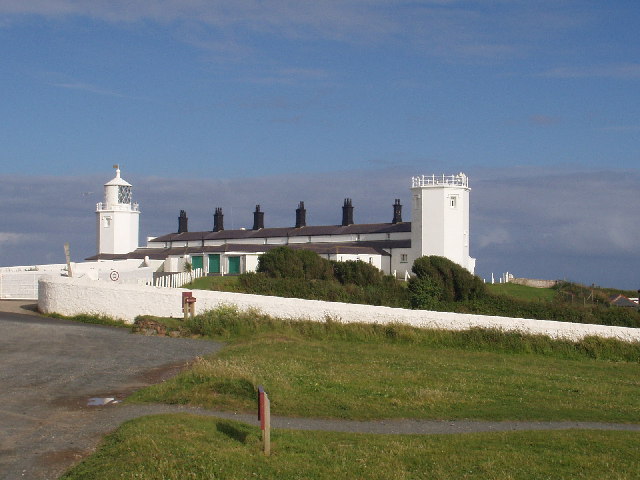
Rough Seas
From the lookout point, the rugged coastline stretched out ominously in both directions. I could feel the fury of the sea, as it lashed against the rocks relentlessly, in a thunderous roar.
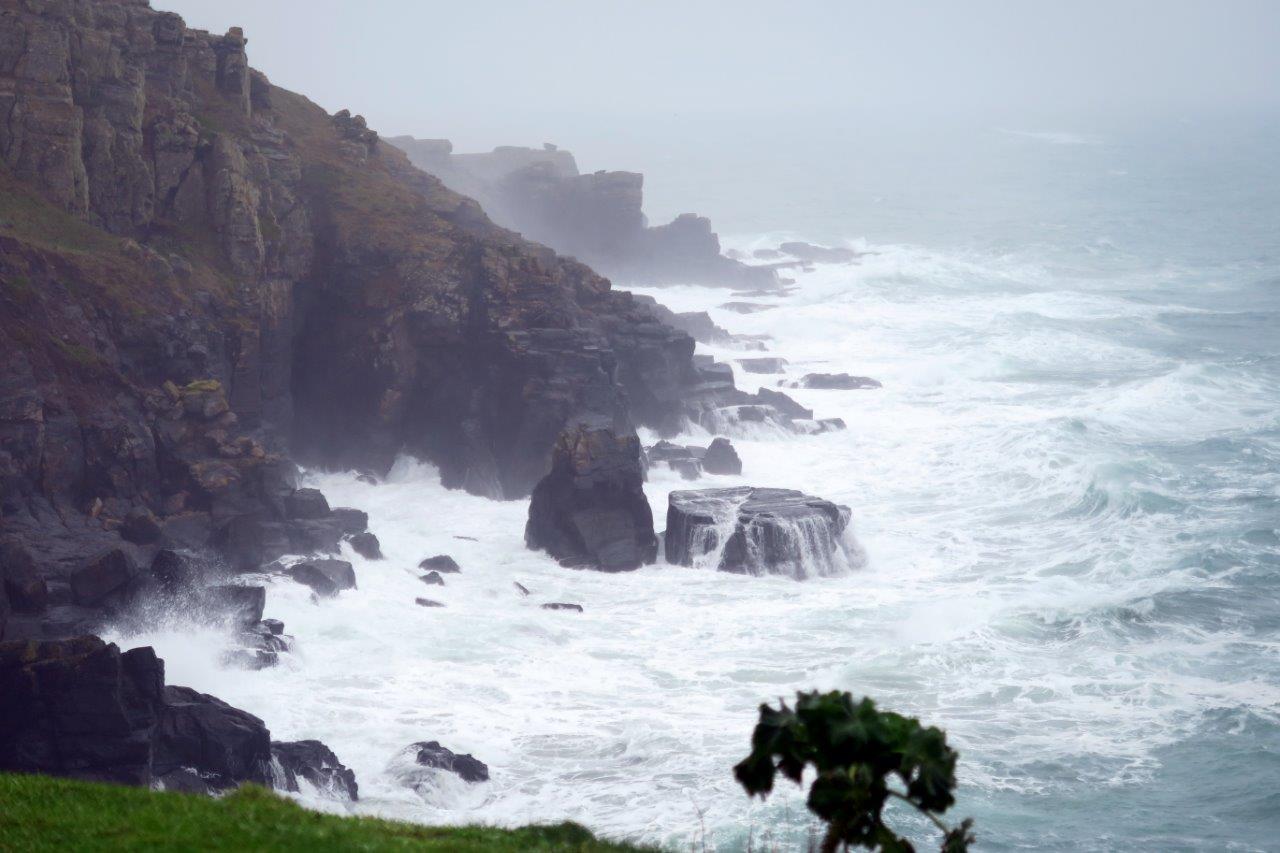

Hugging the coastline, we followed this winding path down to Polpeor Cove and the Old Lifeboat Station

The Old Lifeboat Station
The Lizard Lifeboat Station from 1859 until 1961 was located on cliffs above Polpeor Cove. In 1907 it was home to the Royal National Lifeboat Institution (RNLI)’s biggest rescue, saving 167 lives. In 1961 the station was moved to a safer, less exposed location near Kilcobben Cove.

The rectangular second station (left) was built in 1885, while the third and final Polpeor Cove lifeboat station with launch ramp (right) was built in 1914.

Image Credit : Travel Hacker Girl
The small shingle beach next to the old lifeboat launch ramp is accessible at low tide.
Other places of interest include historical buildings, monuments, signal stations, the Most Southerly House and Most Southerly Gift Shop.

Beaches in and around St Ives
Cornwall has over 300 beaches ranging from long sandy stretches to craggy coves, surf beaches to pebbles. St. Ives is unrivalled for its beach sand that reflects the famously white St Ives light and turquoise blue waters.
2. Porthmeor Beach
Porthmeor beach is a half-mile stretch of sand, just a short 5 minutes walk from the town center. Facing north west, Porthmeor is a popular surf beach as the waves are often cleaner and gentler here, unlike west facing beaches.

We headed down for a walk on the crystal white sand. Though the wind was not as strong compared to Land’s End and Lizard Point, we were pelted by sea spray and drizzling rain.
We could just make out the outline of St Nicholas Chapel, perched on top of The Island overlooking the bay. It is a tiny little chapel that can fit about 10 people inside.
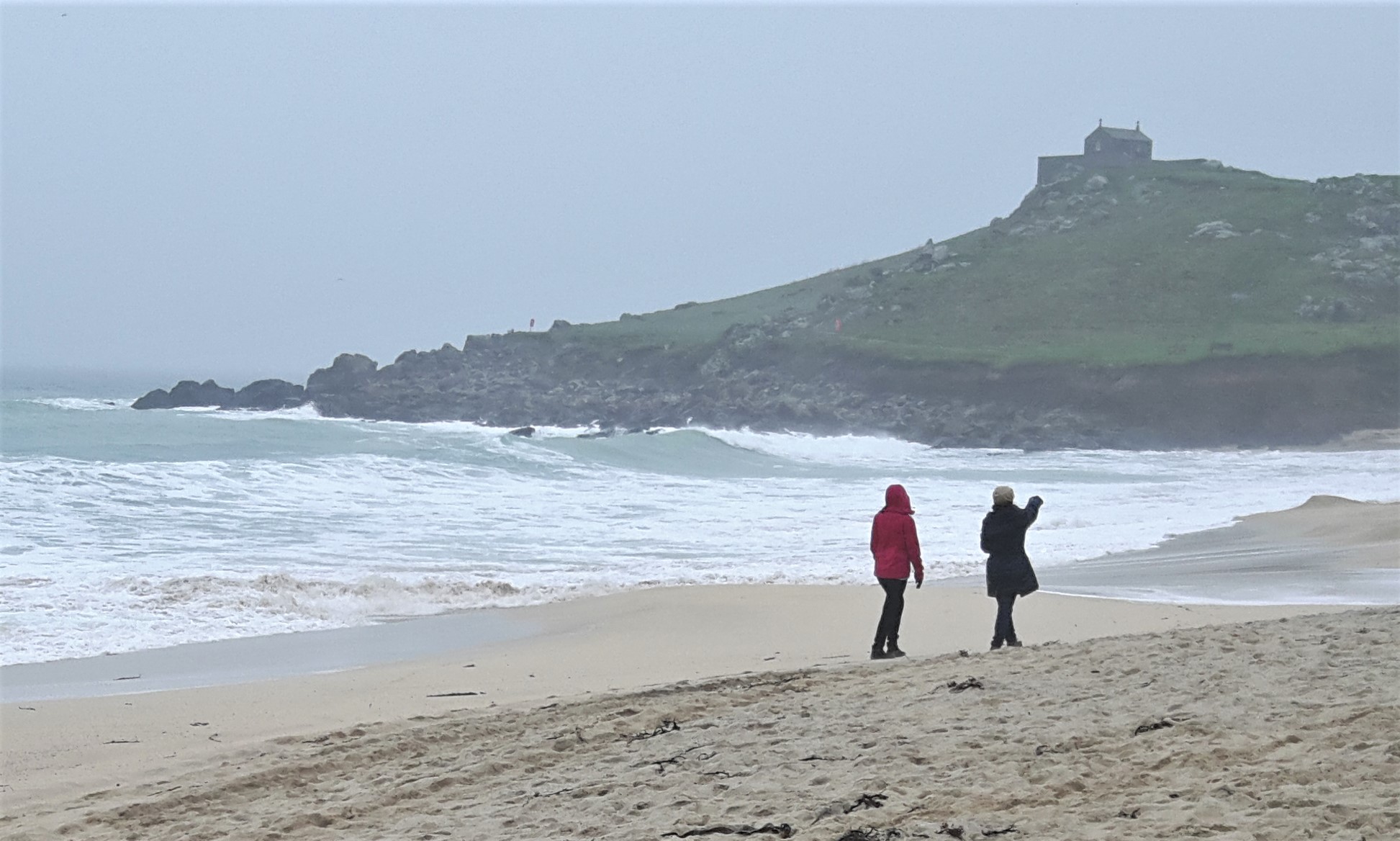
The beach is surrounded by several iconic buildings and places in the town, including the Tate Gallery, Barnoon cemetery, the historic Porthmeor Studios and cellars and St Nicholas Chapel (aka Island Chapel) on the promontory above.
3. Penzance
I first heard of Penzance through Gilbert and Sullivan’s The Pirates of Penzance. Though I have yet to see the musical, I can now claim to have visited the most westerly major town in Cornwall.
24 December 2021
From the Penzance Harbour carpark, we set off on foot to explore the ancient market town and hopefully find a café for afternoon tea.
Starting from the eastern end of Market Jew street, it was an interesting walk through winding streets, peering into quaint window displays of independent shops ranging from art, fashion, rugs, craft and design, gift, antiques & collectibles.
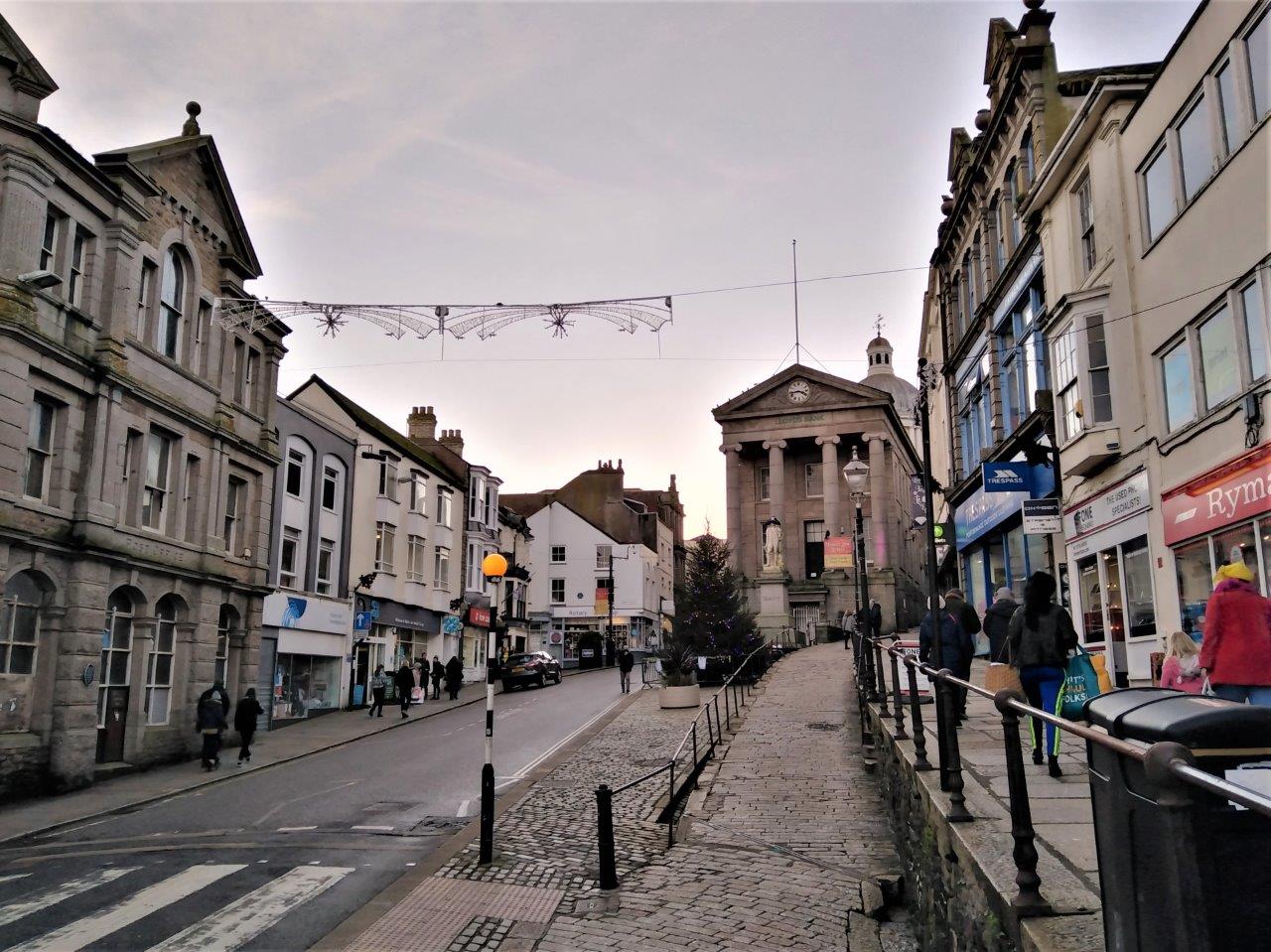
Fascinating historical buildings
Built between 1836–38, the Market Building (former town market) has an iconic giant portico, Tuscan columns and prominent white dome.
At the front, a statue of Sir Humphry Davy (1778-1829), Penzance’s most well known citizen and inventor of the coal miner’s safety lamp, was erected in 1872.

Today, it is more commonly known as the Lloyds Bank building, having housed the bank since alteration work was carried out on the western half of the building in 1922-25.
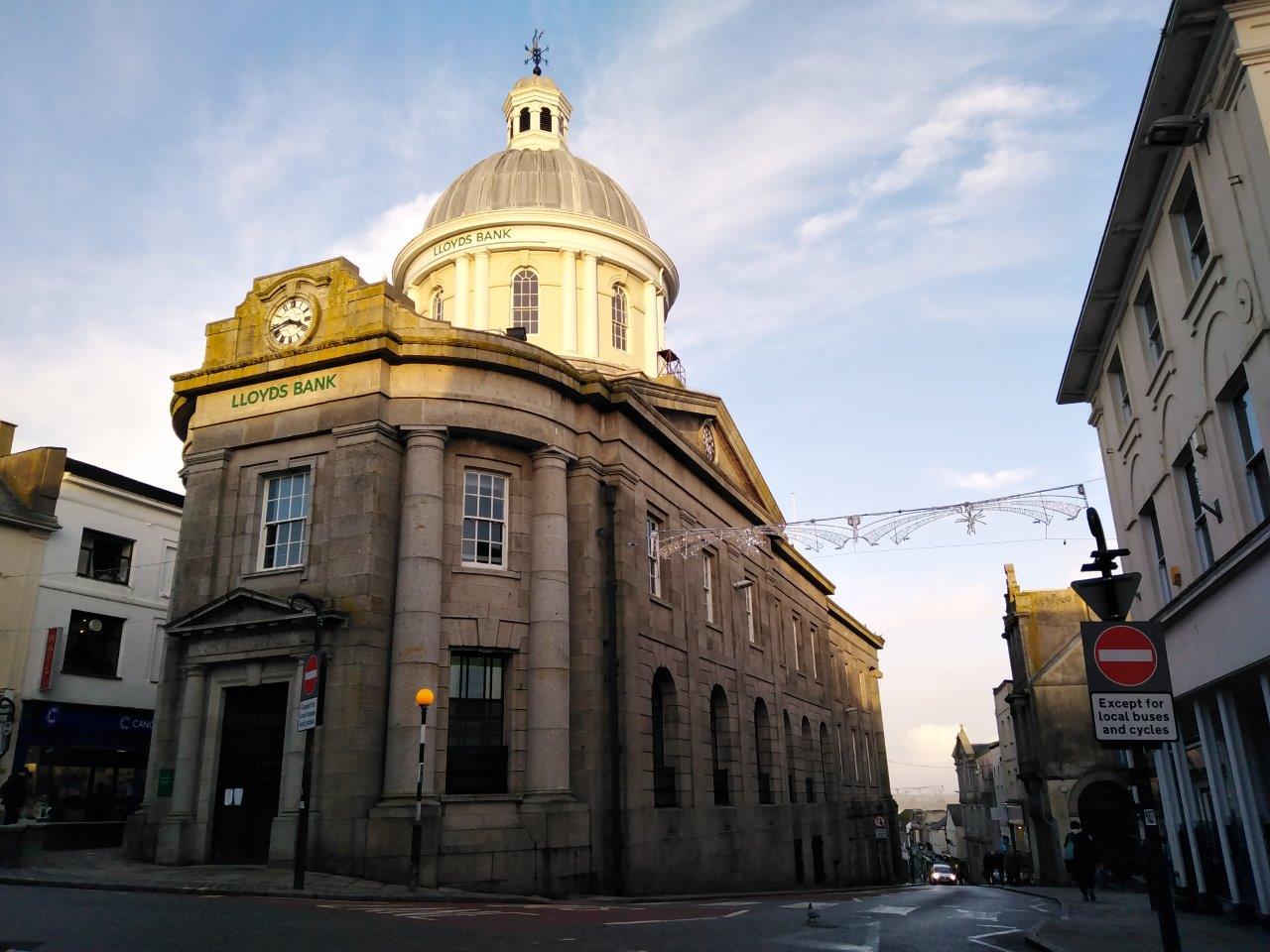

We must have walked into at least 3 cafés before 4pm, who regretfully told us they were closing early as it was Christmas Eve.
We eventually settled for hot chocolate at a pub.
Rejuvenated, we made our way down Chapel Street, the former main street and the most historic of the Penzance thoroughfares.
I was particularly taken by St Mary’s Church, which was built between 1833-5 on the site of ancient 6th century chapel. Together with the Humphry Davy statue and Market Building, this Victorian-styled church dominates the skyline above the harbour.


Inside the church grounds, we cut through the rear of the churchyard and exited onto the road facing the harbour. We walked along the promenade, enjoying dazzling views of the bay as dusk set in.

Starling Murmuration
As the last of the daylight began to fade, an amazing sight caught my eye.
I noticed small groups of birds growing bigger and bigger as the flock gathered to form a huge group, flying in unison.
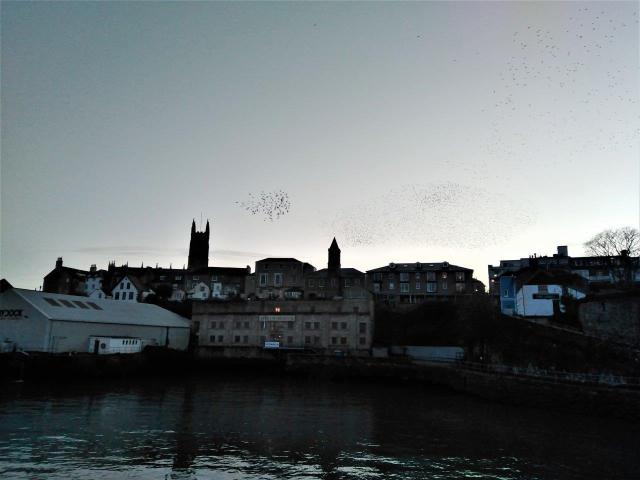
As I gazed in wonder, the air was filled with a continuous whoosh of wings, as the starlings twist, turn, swoop and swirl across the sky in beautiful shape-shifting clouds.
Known as murmuration, scientists believe these birds flock in the first place to confuse and discourage predators, through their sheer numbers, with the noise such a flock makes and, of course, its motion.
On a personal note, the mesmerizing scene resulted in random strangers smiling at each other, pointing to the sky to share their sense of awe and enjoyment of this spectacular aerial dance which lasted close to half an hour.


